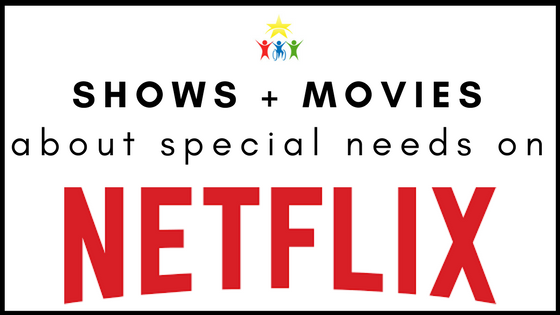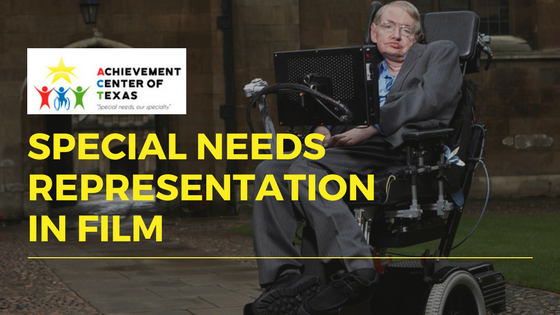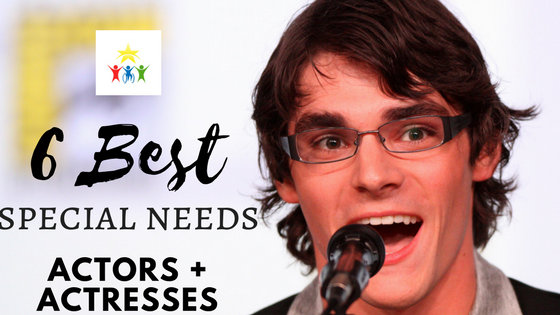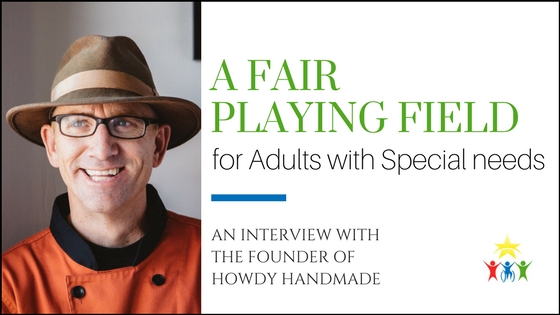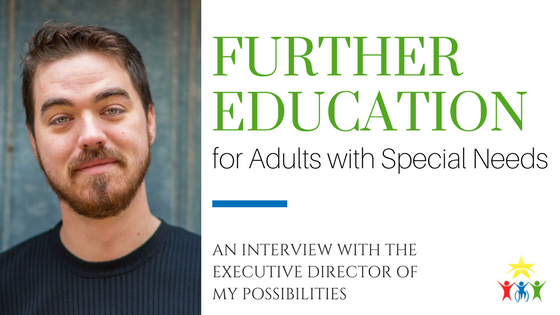Special Needs Representation on Television
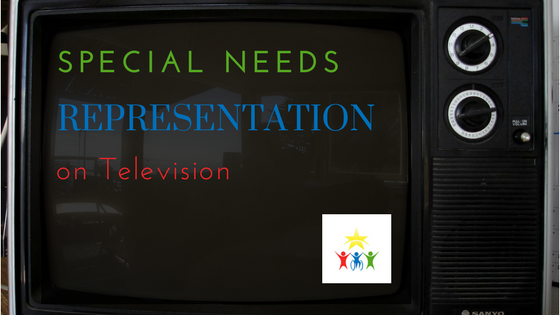
A few weeks ago, an intern here at The Achievement Center of Texas put out a blog discussing special needs representation in film. It discussed the portrayal of those with special needs in the medium, as well as the ethical dilemma of an able-bodied actor playing a disabled character. After its release, we got to thinking about representation in other forms of entertainment; so here we’ll be talking about television.
Representation of Marginalized Groups on Television
Over the past 20 years, we’ve seen TV go from a place dominated by sitcoms to one where the best shows feature impeccable storytelling, complex characters, larger budgets and impressive ambition. With film, you are limited by time (a few hours at the most), but with television, you can have a coherent, single story line go on for years.
So with that, many of the best stories from a generation of writers have made their way to the small screen instead of the big one. But that doesn’t change many of the moral and ethical dilemmas that impact film.
Over the years, television has broken ground like few media. Decades ago, there were many shows tackling issues such as racism, same-sex relationships and other “taboo” topics that most movies were still afraid to touch. Even with so much ground being made, it doesn’t change the fact that many shows have a problem when it comes to lack of representation.
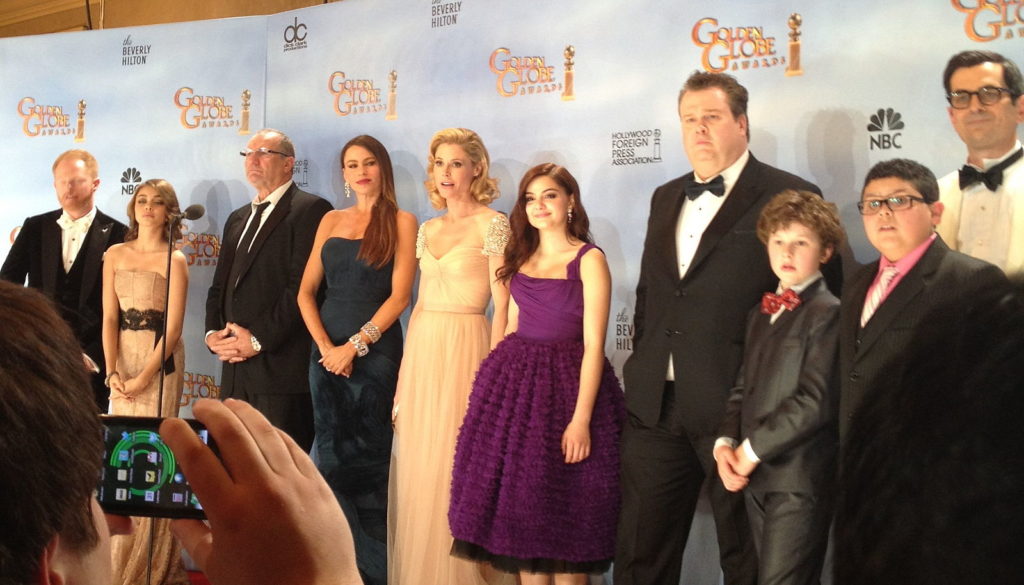
There are many issues that arise when it comes to representation of people with special needs. Will audiences understand the disability the character has? Is this a respectful, yet realistic portrayal of someone with this condition? Is it alright for an able-bodied actor to play a disabled character, but would a disabled actor be able to handle the role?
To the annoyance of some, there are no clear cut answers to these questions. Even so, I want to take some time about a few shows and how they portray those with special needs and disabilities.
The Good – Special Needs Representation on TV
While, as a whole, television still has an issue when it comes to portraying characters with disabilities, a few shows manage to do a rather good job.
Speechless
A fairly recent show that has captured the hearts of many would be the ABC sitcom “Speechless.” The show follows a dysfunctional family and their lives.
One of the central characters would be JJ, a young boy with cerebral palsy. Shown as highly intelligent and often very sarcastic, he is the most entertaining and down-to-earth character on the show. On top of that, the show went out of its way to find the perfect actor. Micah Fowler, age 19, who plays JJ, has cerebral palsy in real life. Despite the physical limitations he has, he is now an actor on one of the most popular comedies on network television.
Game of Thrones
Another series that has tackled characters with disabilities and has been praised by disabled rights activists happens to be one of the most violent, sexual and praised series to ever air. “Game of Thrones” is a fantasy, political drama from HBO.
Taking place in a mythical land and revolving around dozens of characters, fans have been taken on a whirlwind journey for the past seven seasons. Since its release, the show has actually received much praise for its inclusion and portrayal of characters with disabilities.
Jamie Lannister lost his hand in the third season and had to cope with the loss of it and his identity (being known as one of the best sword fighters in the land).
Bran Stark was paralyzed in the first episode, but has since become one of the show’s most important characters.
Jorah Mormont is inflicted with an incurable skin disease that covers most of his body in grey scales, but never gives up hope and travels across the world searching for a cure.
And a character named Hodor suffered from severe brain damage due to a seizure that came over him as a child, has saved the day more than a few times.

All of these characters are portrayed respectively, but are controversially played by able bodies actors. But to the surprise of many, maybe the most beloved character is played by the most appreciate actor. Tyrion Lannister is a dwarf who is often mocked due to his stature, but is undeniably one of the most intelligent characters on the show who has become a fan favorite. The role is played by Peter Dinklage, who in reality is a little person, and over the years has gained wide acclaim for his portrayal of the character (winning several awards).
Other Shows That Get It Right
These are just two examples of shows that do it right; others have included “Breaking Bad,” “Friday Night Lights,” and even the teen drama “Degrassi.” But for every show that does it right, there is one that does it wrong.
The Bad – Special Needs Representation on TV
There have been many bad examples of special needs and disabled characters on TV, more than I can count or recall. The portrayals are disrespectful, stereotypical and tasteless. But what is worse than the portrayals of fake characters is the exploitation of real people.
Over the years there have been countless reality TV shows that follow the lives of those with special needs or disabilities. Some are respectful, showing how they live average lives. And other times, they are exploited for the entertainment of mouth-breathers back home, whether it be openly mocking them or having them do outrageous things.
The Jerry Spring Show
The worst offender may be the “Jerry Springer Show.” Possibly the trashiest program to ever air on television, the show would have participants (usually at odds with each other for one reason or another) come out and talk to each other that would usually lead to fighting.
More than a few times did this include people who had physical disabilities. I remember one episode featuring two little people fighting (one being quite a bit larger than the other), with the larger one just pushing the other around with the crowd cheering like it was a sport. The whole spectacle was truly disgusting, and I don’t know how Jerry Springer can sleep at night taking advantage of people.
As time has gone on, writers have gotten better when it comes to representing the disabled on television. Even so, it doesn’t change the fact that as a whole the medium has a way to go.
The Ugly (but not necessarily bad)
There have been portrayals of those with special needs and disabilities that have appeared on television that aren’t necessarily bad, but come off as ugly.
Ozark
A recent example would have to be the Netflix drama “Ozark.” The show revolves around a money man who works for a Mexican drug cartel and moves to the Ozarks with his family to clean several million dollars. A minor recurring character on the show is a young man named Tuck, played by George Vourazeris. Much like his real life actor, Tuck has Down Syndrome.
In the show Tuck works at a local lodge and comes off as a kind and valuable member of the community. He is very knowledgeable at trivia and is even praised for being able to memorize so much in detail. The character is a respectful portrayal of someone with downs syndrome, and I appreciate the show for going out of their way to cast an actor with it.
That being said, the final episode [SPOILER ALERT] has a rather disturbing scene with the character. In the first season’s final episode, you see Tusk walk into a super center and hand a piece of paper to a man behind the counter. The man then sells him a specific semi-automatic rifle.
Watching the scene, I was confused at first. Shortly afterwards you see Tusk walk out the center and hand the rifle to one of the show’s main characters, a young boy named Jonah. What disturbed me was that Tusk was either tricked into buying the rifle, or whose kindness was taken advantage to buy the rifle for a young teenager. The scene isn’t out of the realm of possibilities, but at the same time made me sad.
South Park
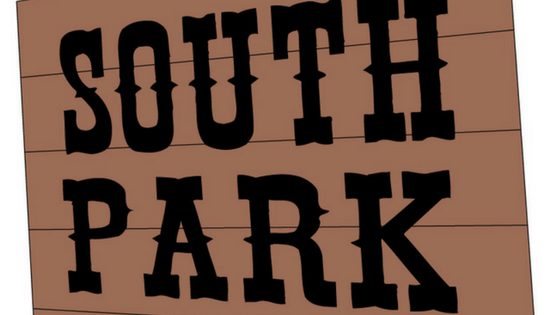
Noted for its vulgarity, criticism, and crudeness, the creators of this series have been stalked and likely received more death threats than any show runners ever. And that show is obviously the cultural phenomenon, “South Park.”
“South Park” is an adult, animated comedy series that airs on Comedy Central. A satirical parody of real life, the show has drawn criticism of how it portrays everybody. No group or individual is safe on this show: Every religion, race, culture, gender, sexuality and political affiliation has been attacked more than a few times.
One group that has often been mocked on the show would be those with special needs or disabilities. They are often portrayed stereotypically, over-the-top and disrespectfully. It’s not hard to see why those in real life would be offended by some of the show’s characters.
That being said, maybe you shouldn’t be.
“South Park” is a satire, a critique and exaggeration of everyone. While its portrayals are over-the-top and ridiculous, they are meant to mock how others see those with disabilities. A few of the show’s most important characters actually have disabilities.
First there is Timmy, a wheelchair-bound boy with a limited vocabulary that only involves a few words. Timmy has been a long running character, appearing early on in the show’s run and has come off as the voice of reason in more than a few episodes. His fellow classmates never seem to be bothered by his disability and always include him.
Then there is Jimmy, who requires crutches to walk and has a moderate speech impediment. Jimmy is shown to be a very ethical and intelligent character, who literally saves the world in the show’s 19th season, and doesn’t let his disability get in the way of his dream of being a stand-up comedian.
So while ridiculous, Jimmy and Timmy are often shown as being some of the most intelligent and moral characters on “South Park.” While often ugly, how the series addresses this complex issue isn’t necessarily bad.
The Non-Existent
Odds are that most people know, or at least come in contact with, someone who has a disability or special needs. With this being true, why are there so few of these characters on television? The lack of representation of these groups on TV is rather disappointing, with only a few shows featuring them.
There could be many reasons why this is true: The writers do not know how to write for these characters, there are logistic issues of having disabled actors in important roles or there are no characters in the plot of the show with disabilities.
Even so, I would like to see more representation of these groups on TV. I think that inclusion is good for society, showing your everyday person that, just because someone is different, doesn’t make them any less.
And I believe that it can be an important teaching tool to explain some of conditions that are out there. Be honest, how many people actually know what autism or cerebral palsy is? Showing TV audiences these conditions in a respectful light could help them grow, and lead to more acceptance for those in real life with them
Conclusion
Portraying any minority group can be a rather difficult thing. You want the character to come off believable and respectable, but never forced. When it comes to those with special needs and disabilities, it’s even harder. It’s not just the portrayal but who plays them that also makes a difference.
It’s a tough issue, and as someone whose college education revolved around advertising, I am not qualified to give a good answer. If anything, I believe that the shows should be as respectful as possible and at least attempt to cast actors with disabilities to play the characters.
And I would like to see more of this marginalized group on television, in an attempt to have the general public learn more about them and be more accepting. Only time will tell.
Enroll a student to improve representation
Representation is a problem mainly because able-minded and -bodied people underestimate the abilities of people with special needs, but it’s also a problem because some people with special needs start to believe the myths that they’re told by society: That they are incapable of doing more.
At our center, students sing, act, dance and create art. Our program is about increasing confidence and meeting individual goals. We’re creating an atmosphere or people with special needs who have the confidence to pursue careers as actors or models or artists.
If you have a child or ward with special needs, click the button below to find out more about our programs and how you can enroll him or her into our center.
Donate to help our students achieve more
As a nonprofit, we couldn’t do the things we do without the support of people like you who care.
$10 covers the cost of a movie theater ticket for one student – which is great for inspiring creativity.
$20 pays for basic supplies for a week’s worth of Arts Exploration projects in one classroom.
$40 covers the cost of dance classes for one month for an underprivileged student.
These are some suggestions for donation amounts, but really every little bit helps. Please click the button below to donate cash or visit our Donate page to see other ways you can help our center and our students grow.

